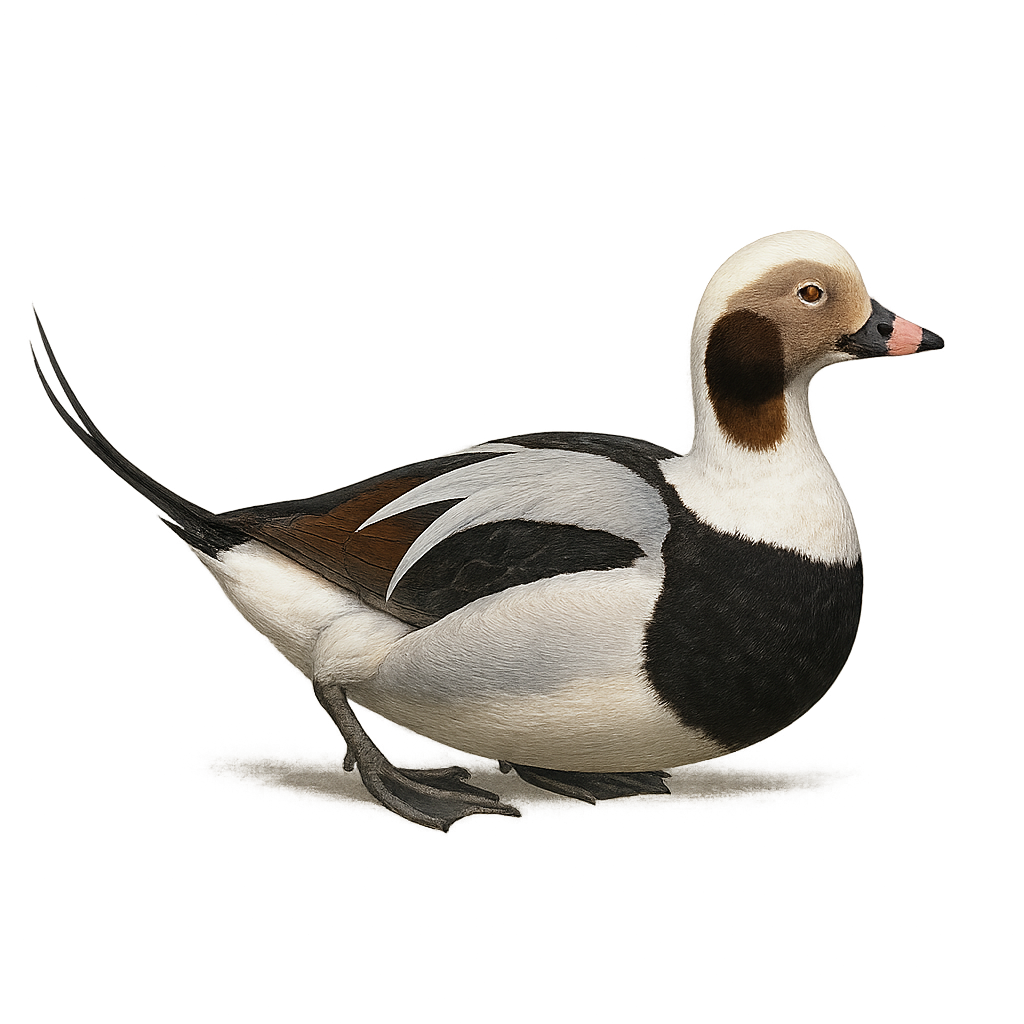Your wildlife photography guide.
Explore the long-tailed duck in detail, study its behavior, prepare your shots.
Where to observe and photograph the long-tailed duck in the wild
Learn where and when to spot the long-tailed duck in the wild, how to identify the species based on distinctive features, and what natural environments it inhabits. The WildlifePhotographer app offers tailored photography tips that reflect the long-tailed duck’s behavior, helping you capture better wildlife images. Explore the full species profile for key information including description, habitat, active periods, and approach techniques.
Long-tailed duck
Scientific name: Clangula hyemalis

IUCN Status: Least Concern
Family: ANATIDAE
Group: Birds
Sensitivity to human approach: Suspicious
Minimum approach distance: 30 m
Courtship display: June to July
Incubation: 23–25 jours
Hatchings: June to August
Habitat:
Coastal shores, cold waters of the Arctic and North Atlantic, particularly around Scandinavia and Canada
Activity period :
Primarily active during the day, with peak activity in the morning and late afternoon.
Identification and description:
The Common Eider is a medium-sized seabird, easily recognizable by its distinctive plumage and diving behavior. It measures about 40 cm in length, with a wingspan of 65 to 75 cm, and weighs between 500 and 900 g. Its plumage is primarily black and white, with a black head, a wide white band around the neck, and white spots on the wings. The male, during the breeding season, has a bright orange beak and a distinctive white line running from the beak to the back of the head. The Common Eider primarily inhabits the cold waters of the North Atlantic, notably around the coasts of Iceland, Greenland, Canada, and Northern Europe. It is an excellent diver, feeding mainly on small fish, crustaceans, and marine invertebrates, which it captures underwater. The Common Eider migrates southward during the winter. Although the species is not currently endangered, it is vulnerable to marine pollution, climate change, and disturbance of its breeding sites.
Recommended lens:
300 mm – adjust based on distance, desired framing (portrait or habitat), and approach conditions.
Photography tips:
To photograph the long-tailed duck, a telephoto lens is ideal for capturing its movements on water or when in flight.
Take photos early in the morning or late in the day to benefit from soft light and better photography conditions.
Be discreet and respect the safety distance to avoid disturbing its natural environment, especially during the breeding season. Observation should be done respectfully, so as not to interfere with its natural behaviors and habitat.
The WildlifePhotographer App is coming soon!
Be the first to explore the best nature spots, track rutting seasons, log your observations, and observe more wildlife.
Already 1 439 wildlife lovers subscribed worldwide

